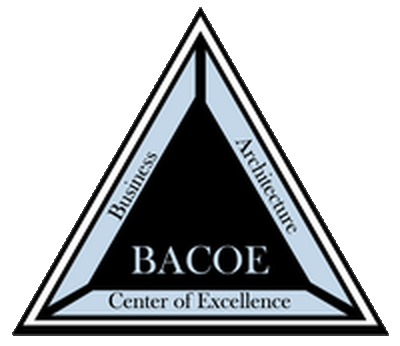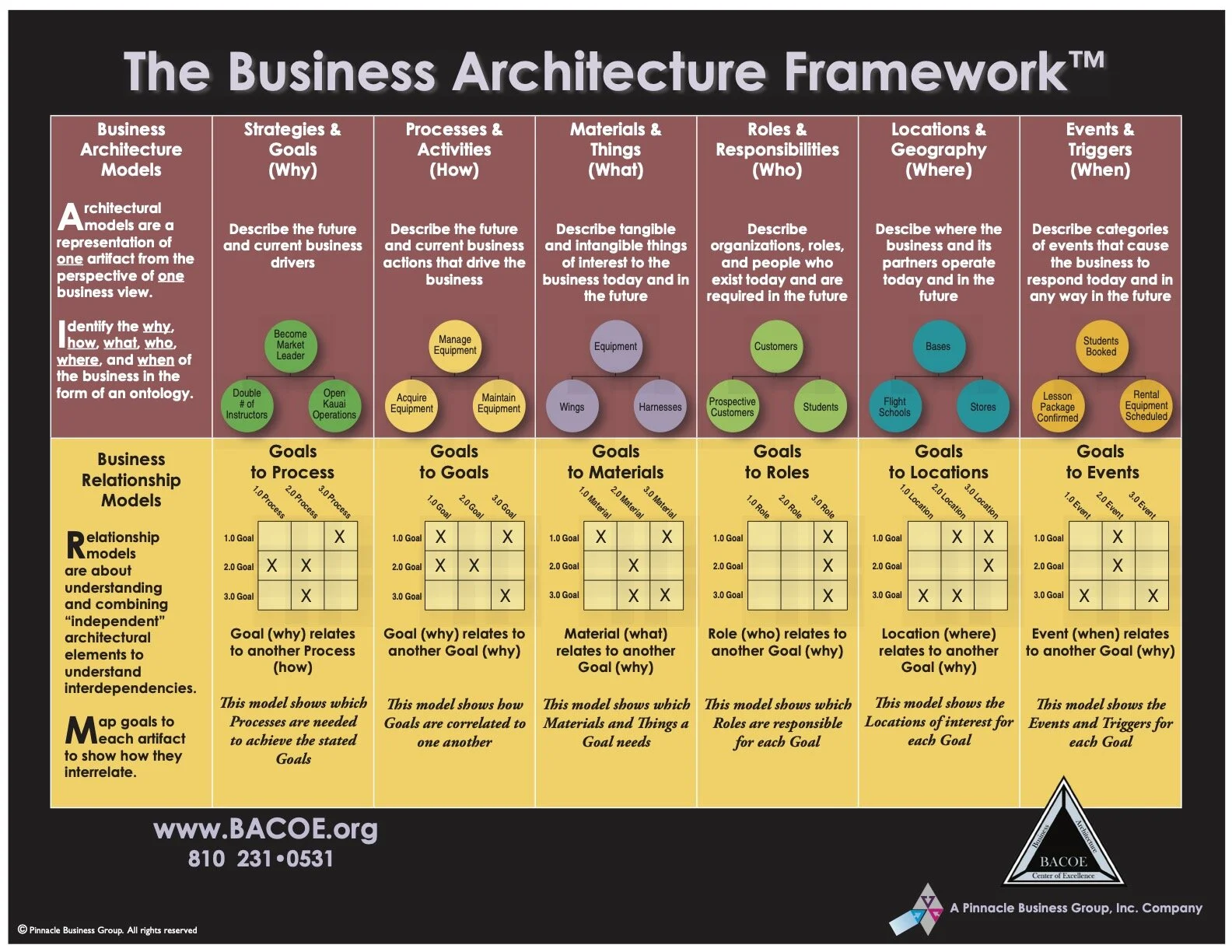Understanding Frameworks for Business Architecture
There are many misunderstood words and confusing phrases in the discipline of Business Architecture due to irregularity between academia, publications, consultants, and the internet.
Below are fact-based descriptions grounded on logic, sound practices, and principles based on decades of field engagements and experience. We hope our credentials are meaningful to you and will provide some sanity to this confusion.
One very misunderstood word is “framework.” Another phrase that may be more useful is a frame of reference.
A framework is a structure that organizes a set of related artifacts. It shows the relationships among the artifacts of a chosen subject area and brings a totality perspective to otherwise individual ideas.
Frameworks, therefore, make the unorganized organized and coherent. It is simply a thinking tool. And as a thinking tool, a "true" framework will never have an "output."
Frames of reference are fundamental to any profession or discipline (engineering, chemistry, physics, linguistics, music—anything) Framework elements must be mutually exclusive and collectively exhaustive. A framework that is in constant update and versioning is troubling. If it is, it is not (or was not) complete.
If we are using Version 4 of a so-called "framework" and now a new Version 9 has been released…. What does that say about the work we did with Version 4?
Can you imagine the English alphabet starting with fifteen letters (Version 1), then going to twenty-one (Version 2), and then twenty- six (version 3), with more proposed arrangements yet to come? How useful would that be?
Can you imagine the periodic table of chemical elements having multiple versions? Chemistry would be alchemy. Can you imagine the notes of music being in continuous versioning? (It would be enjoyable to play in an orchestra.)
Why does Business Architecture need one frame of reference (a Framework)?
Business Architecture frameworks and strategic planning are the keys to planning, coordinating, and implementing an organization's business objectives.
Business Architecture (BA) is developed based on goals and overall business objectives. They help in the smooth functioning of different organizational units inside and outside the technology components.
Organizations are adding complexity by mapping different frameworks, languages, and notations to an environment that is already too complex to understand. As human beings, we are naturally "visually" oriented. We cannot "see" the essence of a problem or solution in 400 pages of text.
A proper framework for business architects should outline a structure representing the complex interactions between business, information, people, processes, and technology.
Once and for all, what is a Framework for Business architecture?
The BACOE Business Architecture Framework™ defines how to organize the structures and components within an architecture. In addition, the framework may be used to describe an organization's current, future, and gap analysis states.
Business Architecture frameworks can also organize architecture into different "views" and "transformations" that make sense to various stakeholders. Thus, views are the other complementary projections of the enterprise model.
For an organization desirous of developing a business architecture, there are various self-described frameworks to choose from. Depending on the complexity and scale of the enterprise, they can select from commercial, defense industry, and government frameworks.
Frameworks such as DODAF, MODAF, and TOGAF are classified as Implementation Frameworks and/or methodologies in combination with a framework. DODAF, MODAF, and TOGAF's so-called "frameworks" are continuously modified and altered. If you were using Version 8.9 of the framework and we now have Version 10, what does that say about the foundation and knowledge we got from Version 8.9? Compare approaches to Business Architecture HERE.
The practitioner-standard “frame of reference” for Business Architects.
The BACOE Business Architecture Framework™ has become virtually the world standard for expressing and laying out the framework for business architecture and has the tools every business architect needs.
It consists of a two-dimensional classification model based on the intersection of six communication questions (What, Where, When, Why, Who, and How) with two models defining the two characteristics of interest to the business- architecture models and business relationship models.
The strong point of this Framework is that it represents the only complete, non-redundant, and detailed coverage of an organization.
Business Architecture, defined in terms of this Framework, leads to the acknowledgment that there is more to an organization than mere data and processes.
There are numerous other issues, multiple locations, and timing factors to consider while planning its development.
All frameworks have the goal of outlining a structure that can represent the complex interactions between people, processes, and technology. We define how to organize the structures and components within an architecture - capturing all business architecture standards. This may be used to describe the current, future, and gap analysis states of an organization.
The BACOE Business Architecture Framework organizes architecture into different “views” that make sense to different stakeholders.
Thus, views are the different complementary projections of the enterprise model.
The “views” based approach of architecture frameworks is good in less complex, small-scale scenarios.
Architecture Framework vs. Architecture Methodology
A framework is not a methodology, and a methodology is not a framework. A framework can possibly accommodate many methods, but there is no proven methodology that works across multiple frameworks (at least not in the practitioner's world).
A methodology is a set of practices and procedures applied to a specific branch of knowledge. A methodology contains proven processes to follow in planning, defining, analyzing, designing, building, testing, and implementing the area under consideration.
An outstanding methodology simplifies and standardizes the process; it can be customized to meet an organization's specific standards and practices.
An outstanding methodology is correct, up-to-date, complete, and concise; it defines deliverables; it has methods, techniques, standards, practices, roles, and responsibilities; it has suggested timings and sequences and dependencies; and it has associated education.
Guidelines or principles are not methodologies either. A guideline might tell you what operations you can do or provide suggestions on deliverables. Methodologies should provide a predefined path or paths – a "roadmap" or a "recipe."
A methodology should allow you to do something "Monday morning"—you shouldn't have to figure out how to take a guideline and turn it into a path. How can a beginning practitioner be expected to "modify" or "customize" a methodology if they have not actually done Architecture?
The BACOE - Pinnacle Business Group, Inc. Quick Start Methodology meets the criteria for a Business Architecture Methodology.



